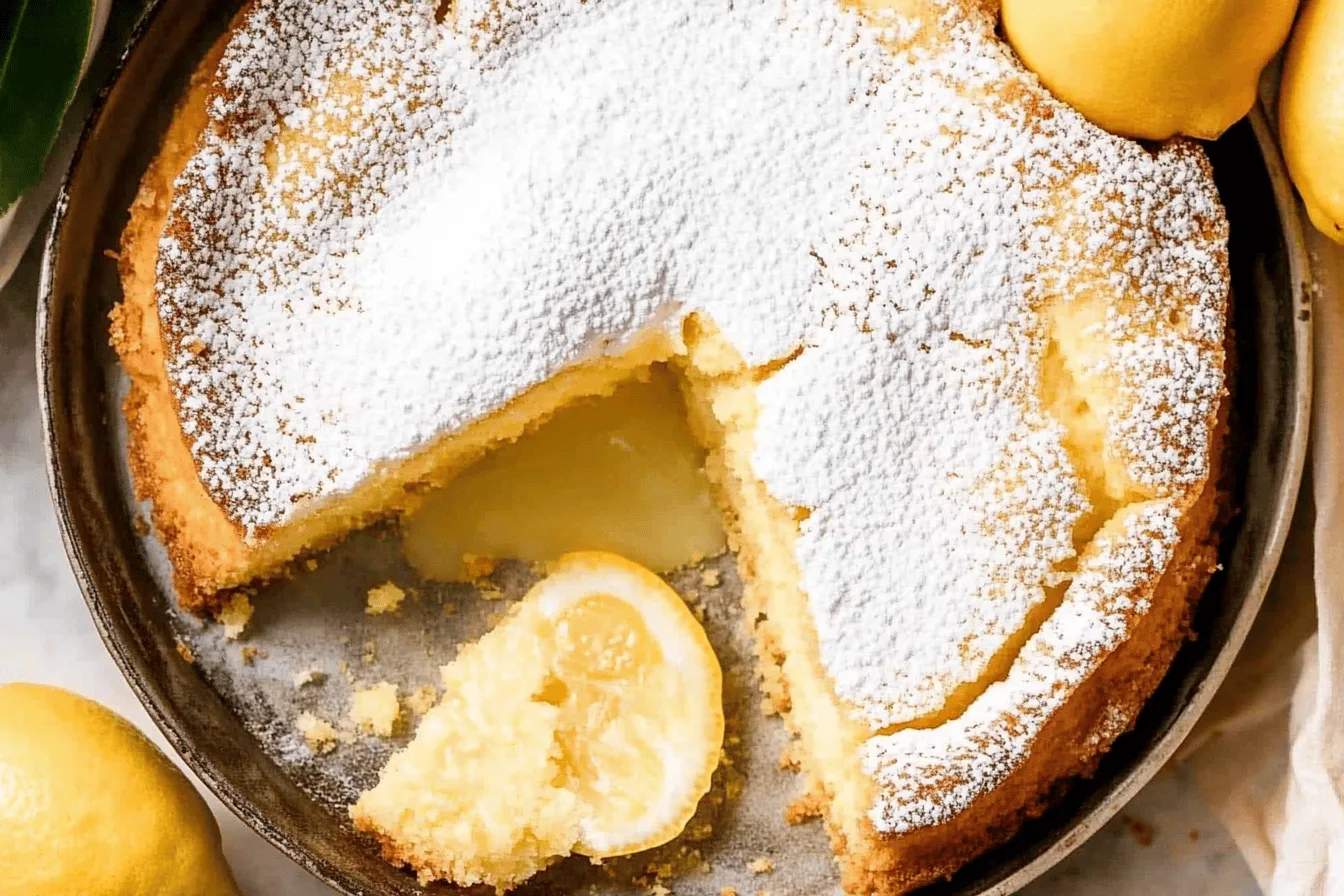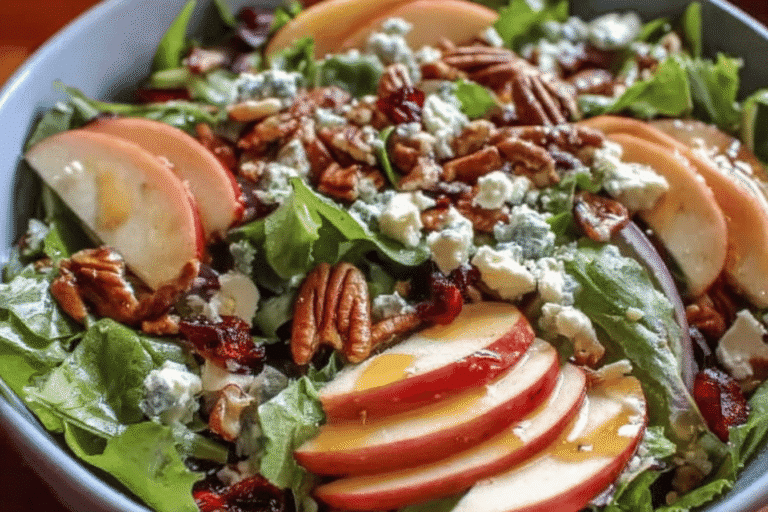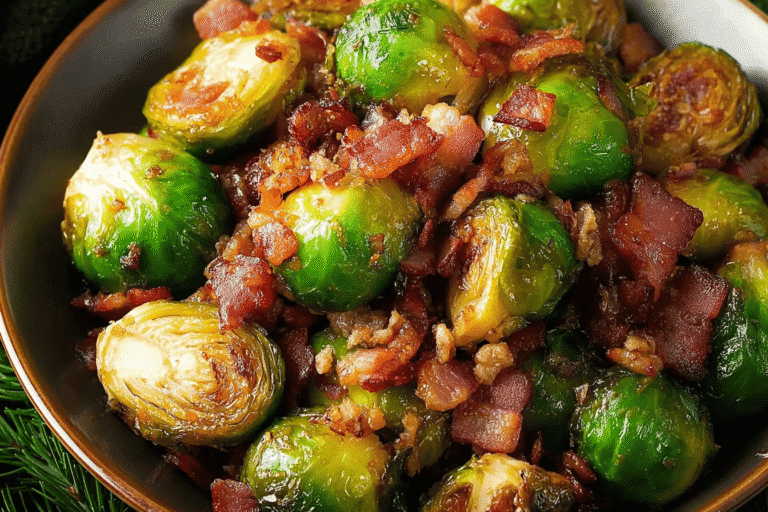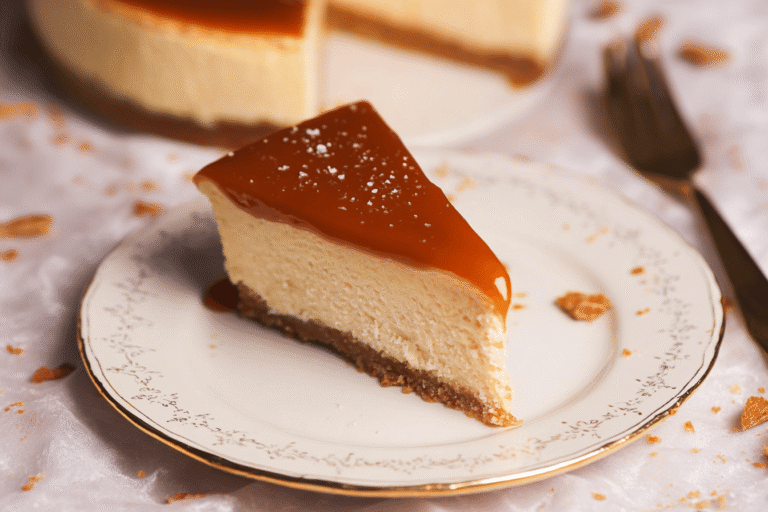Lemon Butter Cake
Introduction
Are you a fan of luscious desserts that leave an unforgettable impression on your taste buds? If so, the Lemon Butter Cake is a treat you absolutely have to try. This recipe features the perfect balance of tart lemons and rich butter resulting in a dense yet light, flavorful cake. Ideal for any occasion, whether it’s a cozy night in or a celebratory gathering, this sweet and zesty dessert is sure to win hearts.
Detailed Ingredients with measures
– Granulated sugar (3/4 cup)
– All-purpose flour (1 3/4 cups)
– Unsalted butter, softened (1/2 cup)
– Freshly squeezed lemon juice (1/4 cup)
– Lemon zest (1 tablespoon)
– Baking powder (1 tablespoon)
– Salt (1/2 teaspoon)
– Eggs (3, room temperature)
– Sour cream (1/2 cup)
– Powdered sugar (for dusting or optional glaze topping)
Prep Time
This Lemon Butter Cake is straightforward to prepare! You’ll set aside about 20 minutes for the preparation. This time includes measuring the ingredients, mixing the batter, and ensuring that everything is ready for baking.
Cook Time, Total Time, Yield
The cook time for the Lemon Butter Cake is approximately 40 minutes in the oven at the suggested temperature. Altogether, including prep and baking, the total time required for this recipe is about 1 hour. The result? A cake that serves 8 generous slices, making it perfect for sharing.
“`html
Detailed Directions and Instructions
Step 1: Preheat the oven and prepare the pan
Preheat your oven to 350°F (175°C). Line the bottom of a round 8-inch (20 cm) cake pan with parchment paper. Grease the sides thoroughly with butter or non-stick spray to prevent sticking.
Step 2: Mix the dry ingredients
In a medium-sized bowl, sift and whisk together the all-purpose flour, baking powder, and salt. Set this mixture aside as it will be combined later with the wet ingredients.
Step 3: Combine the wet ingredients
In a large bowl, using a hand mixer or stand mixer fitted with the paddle attachment, cream together the softened butter and sugar until pale, light, and fluffy. This should take about 2-3 minutes on medium speed. Add the eggs, one at a time, making sure each egg is completely incorporated before adding the next. Mix in the lemon zest and vanilla extract until evenly combined.
Step 4: Alternate mixing dry and wet ingredients
With the mixer on low speed, alternate adding the dry ingredients and milk into the wet mixture. Start and end with the dry ingredients, adding them in three portions and the milk in two portions. Mix just until all ingredients are combined, taking care not to overmix.
Step 5: Bake the cake
Pour the batter into the prepared cake pan and smooth the top using a spatula. Tap the pan lightly on a flat surface to remove any air bubbles. Place in the preheated oven and bake for 30-35 minutes, or until a toothpick inserted into the center of the cake comes out clean. Once baked, allow the cake to cool in the pan for 10-15 minutes before transferring to a wire rack to cool completely.
Step 6: Prepare the lemon glaze
In a small bowl, whisk together the powdered sugar, freshly squeezed lemon juice, and a splash of milk. Adjust the thickness by adding more powdered sugar to thicken or a tiny bit of milk to thin out. The glaze should have a pourable consistency that is not too runny.
Step 7: Glaze the cooled cake
Once the cake has cooled completely, pour the lemon glaze over the top. Use an offset spatula or spoon to spread it evenly, allowing some to drizzle down the sides of the cake. Let the glaze set for about 10-15 minutes before slicing and serving.
Notes
Note on room temperature ingredients
Ensure all wet ingredients, such as eggs, milk, and butter, are at room temperature. This helps the batter mix evenly without curdling and results in a tender cake.
Note on lemon zest and juice
Use fresh lemons for the best flavor in the cake and glaze. Avoid grating the white pith of the lemon when zesting, as it can turn the cake bitter.
Note on storage
Store the cake in an airtight container at room temperature for up to 3 days. If you want to keep it longer, refrigerate for up to 5 days or freeze it for up to a month. Make sure the glaze is set before storing to avoid smudging.
Note on substitutions
If you don’t have whole milk, you can substitute it with buttermilk or a 50:50 mixture of heavy cream and water. For a dairy-free version, use a plant-based milk alternative.
Note on glaze texture
Adjust the thickness of the glaze according to preference. You can keep it thicker for a creamier coat or thinner for more of a drizzle effect.
“`
Cook Techniques
How to properly cream butter and sugar
To achieve a fluffy texture, ensure the butter is softened to room temperature. Beat the butter and sugar together until the mixture turns light and fluffy. This step is essential for incorporating air into the batter.
Creating a smooth batter
When mixing the batter, alternate between adding the dry ingredients and the liquid ingredients. This ensures that the batter mixes evenly without overmixing, which could make the cake dense.
Making the lemon glaze
Combine powdered sugar and lemon juice to create the glaze. Adjust the consistency by either adding more lemon juice for a thinner glaze or more powdered sugar for a thicker glaze.
Cooling the cake properly
Allow the cake to cool in the pan for about 10 minutes before transferring it to a wire rack to cool completely. This prevents the cake from breaking apart while removing it.
FAQ
Can I use bottled lemon juice instead of fresh lemon juice?
Fresh lemon juice is highly recommended for the best flavor, but bottled lemon juice can be used in a pinch. However, keep in mind that the flavor may not be as vibrant.
How do I store the lemon butter cake?
Store the cake in an airtight container at room temperature for up to 2 days or refrigerate for up to 5 days. For longer storage, you can freeze the cake for up to 3 months.
Why did my cake turn out dense?
If the cake turned out dense, it may be due to overmixing the batter, not creaming the butter and sugar properly, or using cold ingredients. Be sure to follow the proper mixing methods and use room-temperature ingredients.
Can I substitute butter with oil?
Butter is key to the flavor and texture of this cake, so substituting with oil is not recommended for the best results. However, if you do substitute, note that the flavor and texture will likely change.
How can I make the cake more lemony?
Increase the amount of lemon zest or use a small amount of lemon extract for a stronger lemon flavor. Avoid using too much lemon juice in the batter, as it can affect the cake’s texture.
Can I make this cake gluten-free?
Yes, you can try substituting the all-purpose flour with a gluten-free flour blend. Make sure to use a blend that contains xanthan gum or add some separately for better structure.
What can I use instead of powdered sugar for the glaze?
If you don’t have powdered sugar, you can process granulated sugar in a blender until it becomes a fine powder. This can be used as a substitute for the glaze.

Conclusion
This lemon butter cake is a beautifully balanced dessert that combines the tanginess of lemons with the richness of butter in every bite. It’s soft, moist, and packed with delightful flavors, making it an irresistible treat to impress your loved ones or enjoy on any occasion. Once you try it, this easy-to-make cake is sure to become a staple in your dessert collection.
More recipes suggestions and combination
Lemon Poppy Seed Muffins
Combine zesty lemon flavor with the nuttiness of poppy seeds for a breakfast treat or snack that’s moist, fluffy, and irresistible.
Blueberry Lemon Bars
Pair the tangy lemon base with sweet blueberries for a refreshing take on classic lemon bars.
Thyme Lemon Shortbread
Infuse buttery shortbread cookies with fresh thyme and lemon for a fragrant and sophisticated twist.
Lemon Raspberry Bundt Cake
Combine tart raspberries and citrusy lemons in a stunning bundt cake perfect for special occasions.
Vanilla Lemon Cream Cake
Layer a luscious vanilla cream between soft lemon sponge for a creamy and refreshing dessert.
Lemon Coconut Tart
Blend bright lemon curd with a sweet coconut crust for a tropical-inspired dessert.
Orange and Lemon Pound Cake
Balance the sweet citrus of oranges with the zing of lemons in a dense and buttery pound cake.
Lemon Lavender Loaf
Incorporate floral lavender notes into a lemon loaf for a unique and aromatic treat.







